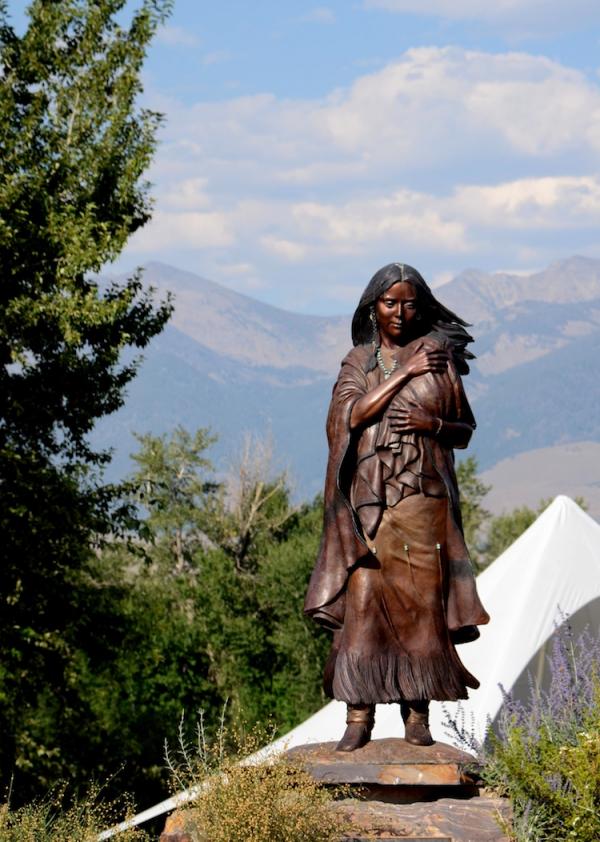
Jack McNeel
The Sacajawea statue in Salmon, Idaho is in the ancestral homelands of the Lemhi Shoshone people.
12/6/13 ICTMN
Few women in U.S. history have had more influence on the nation’s history than the young Lemhi Shoshone woman, Sacajawea. It’s very likely that Lewis and Clark would never have reached the Pacific Ocean had it not been for her help. White settlement would have been different. Indian wars throughout the western half of the country would have been altered. We might even be saluting the British flag rather than the American flag. Sacajawea’s role was gigantic.
Innumerable statues have been created of her, she has graced postage stamps and the copy gold coin bears her resemblance. Despite that, there is great confusion and disagreement about this remarkable woman. No photos exist of her, so images and statues reflect what their creator thinks she would have looked like. There is disagreement about the spelling and pronunciation of her name, even where she was born and certainly where she died. But there is no disagreement as to her role in U.S. history. The Lemhi Shoshone people claim her, but others disagree.
Sacajawea was 11 or 12 when she was captured by the Hidatsa. A couple years later she married Charbonneau. When he was hired by Lewis and Clark as an interpreter she was included because they thought she might prove helpful when they reached her homelands in what is now Montana and Idaho. Four years had elapsed since her capture so she was probably 16 when she joined the expedition.
Dr. Orlan Svingen, a historian, and professor at Washington State University, has worked with the descendents of Sacajawea, the Agai Dika people, since 1991. “Sacajawea, carrying a child, speaking Shoshone, talking to a Frenchman… She disarmed anybody because she was a woman with a child,” he said. “On top of that, when she came to this country (western Montana) she knew people and could speak with them.”
Perhaps her first major influence on the expedition came in early May when the pirogue (boat) she was in with Charbonneau at the helm capsized. Lewis describes Charbonneau, writing, “Charbono cannot swim and is perhaps the most timid waterman in the world.” The boat contained instruments, books, medicine, much merchandise, “in short almost every article indispensably necessary to further the views, or insure the success of the enterprise,” Captain Lewis wrote.
Sacajawea was calm despite having her newborn son with her and was able to retrieve many scientific instruments and books. Their medical supplies were lost but they were able to continue westward. Without her help, at that point, the expedition would have been much more difficult and less successful.
According to Svingen, well before they reached what is now Idaho, Sacajawea said, “This is the home of my people.” It was August 8, 1805. They soon met some of her own, the Lemhi Shoshone people. The expedition was in desperate need of horses, winter was approaching and a massive mountain range separated them from the Columbia River and the Pacific coast. With the aid of Sacajawea as both an interpreter and friend to both the expedition and the tribe, horses were obtained and a guide, an elder they called Toby, was provided to lead them over the mountains. Without the tribe’s help and Sacajawea’s assistance, this likely would have ended Lewis and Clark’s exploration.
“This was huge!” Svingen said about Sacajawea and the tribe’s help. “This was like atomic energy! This was enormous!” Had Lewis and Clark not reached the Pacific, they would not have been able to claim the land for the United States.
Many questions will likely remain unanswered but few will argue the importance of Sacajawea to the Lewis and Clark expedition or to her impact on U.S. history.
